The Tunisian crochet cross stitch is one of those stitches that is rarely used alone in a pattern, but has the ability to add special details that make your project unique!
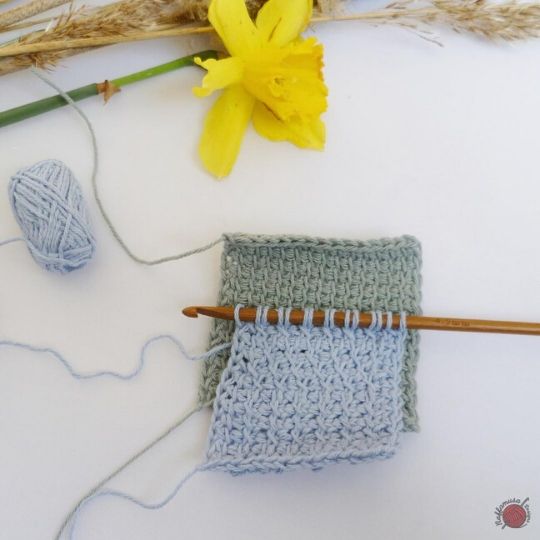
To have a more visual idea of what the Tunisian cross stitch looks like in a project, take a look at these patterns:
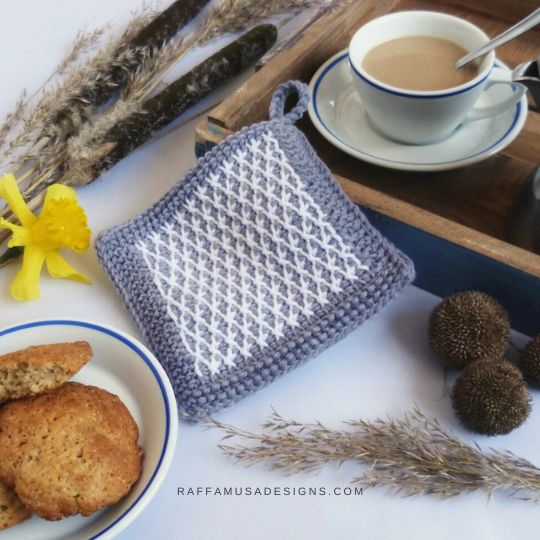
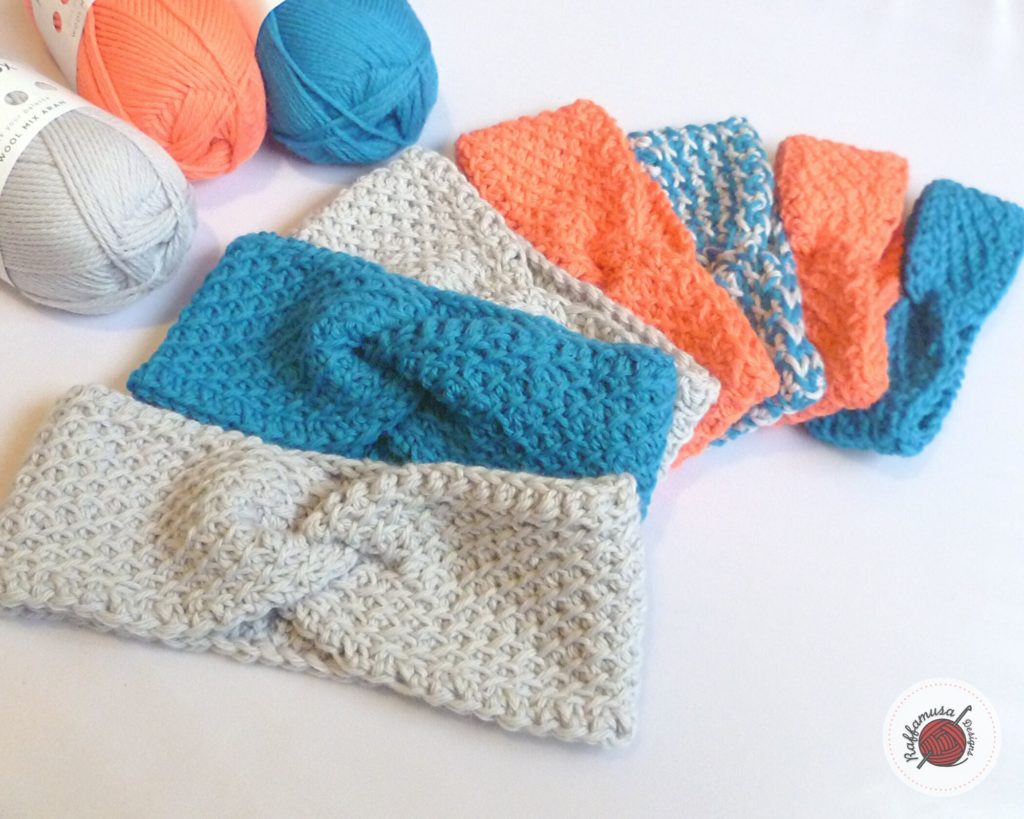

Abbreviation and Chart Symbol
Finally, you might find it useful to know that the official abbreviation of the Tunisian Cross Stitch is Tcs.
When crocheting a pattern from a chart, you will see that the symbol of the Tcs is a cross or more exactly a sort of multiplication sign connecting the two stitches to cross together.
Before You Start This Tutorial
This tutorial assumes that you already know how to crochet a foundation row.
In case you do not know how to make a Tunisian foundation row, I suggest you go back to this tutorial and crochet a foundation row of 15 sts. Then, come back and join me right here!
If you already know how to crochet a Tunisian foundation row, that’s super! Get your foundation row ready with 15 sts and go ahead with learning the Tunisian crochet cross stitch.
Compare the Tunisian Simple and Cross Stitch Swatches
One important thing to keep in mind when using the Tunisian cross stitch in a project with other Afghan stitches is that their tension can vary quite a bit.

In the photo above, you can see two swatches with 15 stitches each worked with the same yarn and hook. However, the green swatch is made with the Tunisian simple stitch, and the blue one is a mix of aligned and biased Tunisian crochet cross stitches.
Of course, you’ll notice that the Tunisian cross stitch kind of shrunk the size of the swatch! In other words, the cross stitch has a much tighter tension than the simple stitch.
And I can tell you that there’s no blocking that can fix this!
So, the take-home message here is that if you want to mix a Tunisian cross stitch section with sections in some other Tunisian stitches, make sure you crochet a couple of swatches to figure out which combination of hook sizes gives you the same final tension.
This way, you can switch between the two hooks when needed and keep the size of your project constant throughout.
Materials
- Yarn of choice. In this tutorial, I used some sport-weight yarn.
- Regular crochet hook without big handles. For this tutorial, I used a 4.5 mm (7 US) crochet hook.
- In general, with Tunisian crochet, I go at least one hook size up compared to regular crochet. However, with the Tunisian cross stitch, one hook size more might not be enough. I will show you why right at the end of this tutorial.
Tunisian Crochet Cross Stitch Tutorial
1. Let’s start with a foundation row of 15 stitches.
As with ideally every Tunisian crochet project, sk the very first vertical bar. Take a second to identify the next two stitches (indicated by two arrows in the first panel of the figure below).
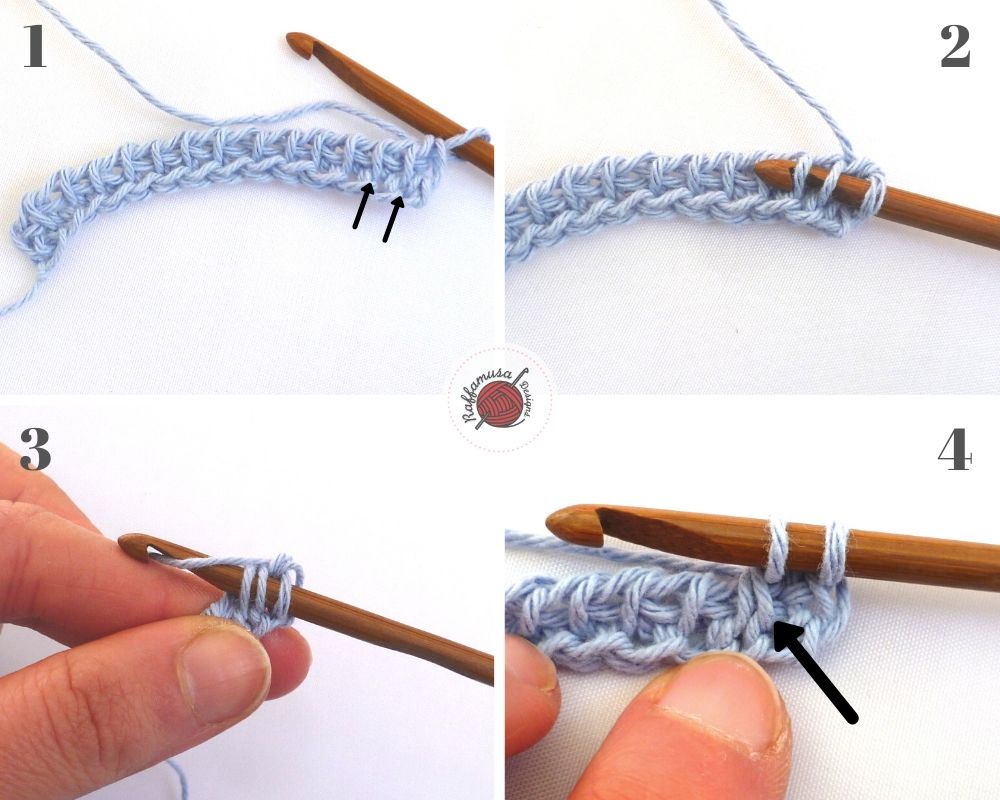
2. Insert your hook under both the second and third vertical bars.
3. Yarn over.
4. Pull up a loop.
5. Go back to the second vertical bar and insert your hook under it.
6. Yarn over and pull up a loop.
Congratulations, you just made a Tunisian crochet cross stitch!
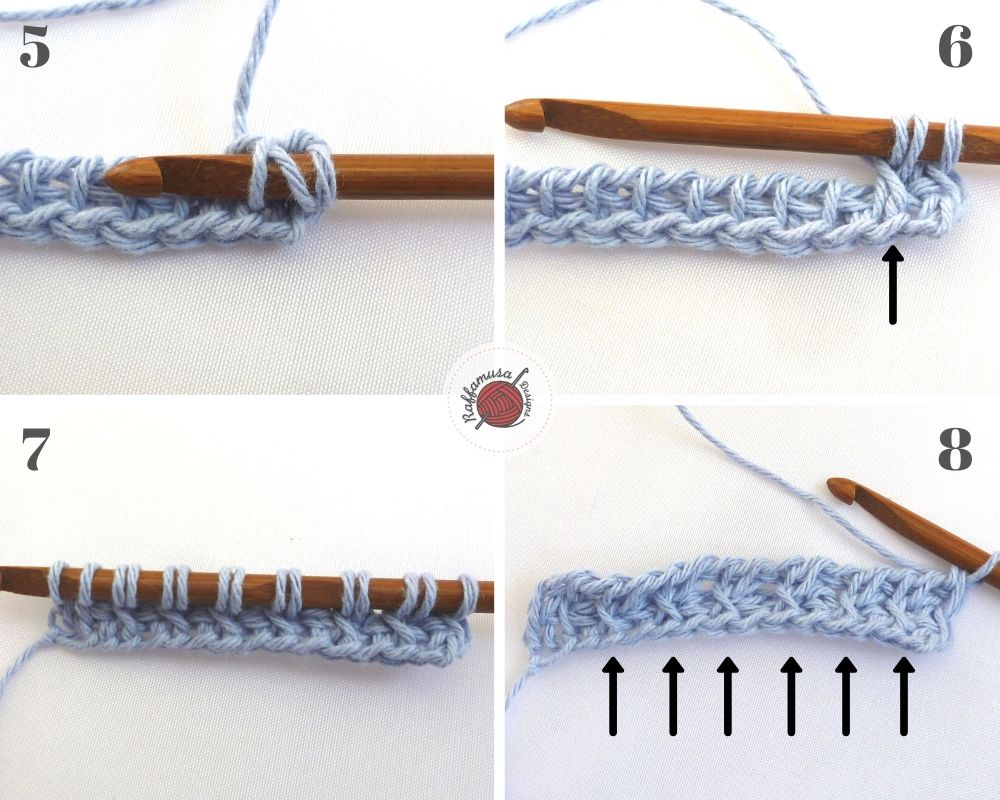
Repeat the instructions above to make another cross into the fourth and fifth vertical bars, and then into the next two stitches and so on. Make a total of 6 crosses and complete the row with one Tunisian simple stitch and one last stitch worked under both loops.
You just learned how to crochet the Tunisian cross stitch!
I hope you enjoyed learning how to crochet the Tunisian Crochet Cross Stitch. Please, do not hesitate to contact me if you need any help or support. I am looking forward to seeing all your beautiful makes on Facebook and Instagram!
Find more Tunisian crochet stitch tutorials here on the blog…
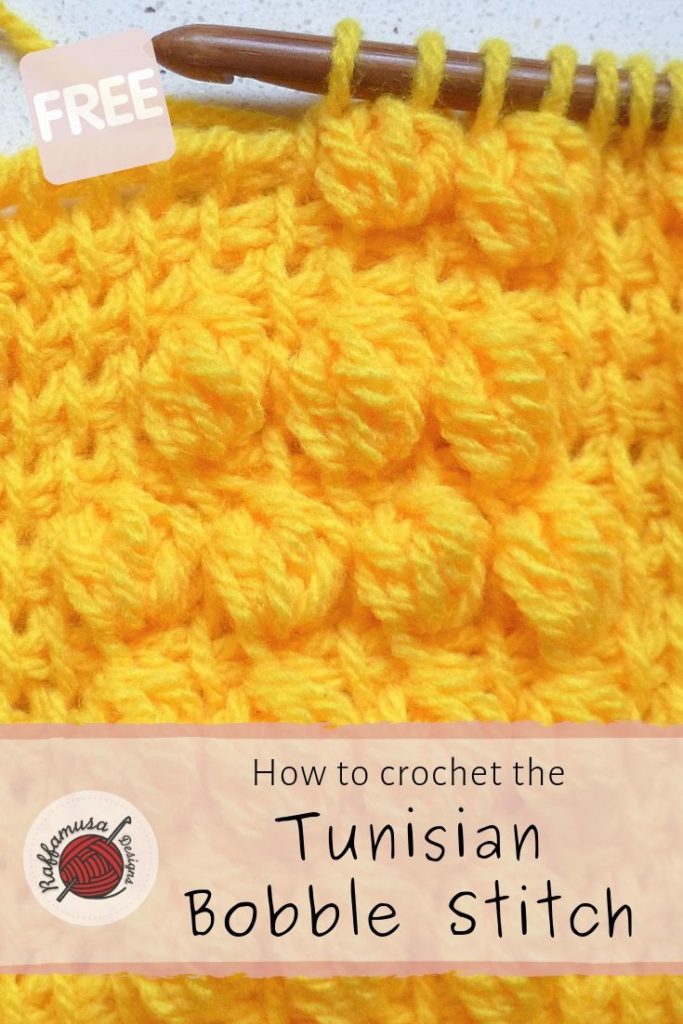
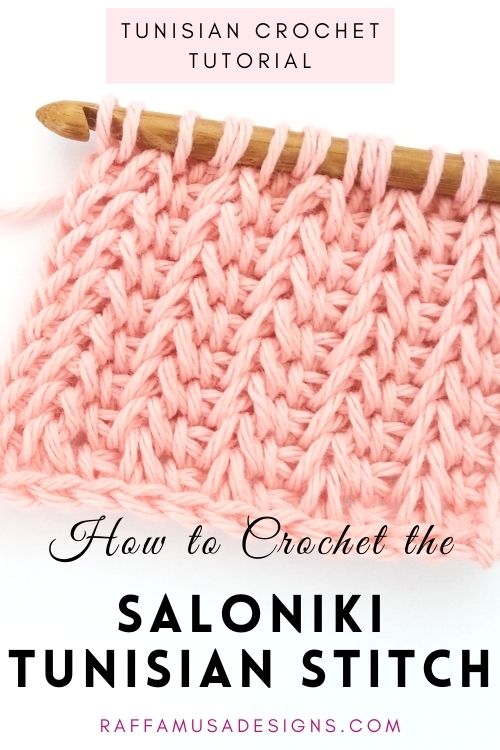
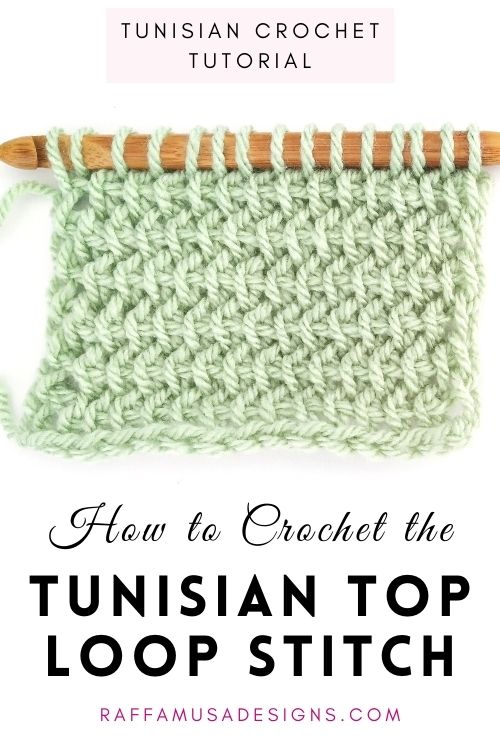

OK. Next ? [grin]
🤣 I still have two posts which are half way done, but those are going to go out tomorrow. I feel like I’ve done enough for now, calling it a day 😅
Fair enough too. You done well kid. 😀
You’re on a roll today! Everything you make is so pretty.
Thank you 😅 this is what happens with self isolation and too much time on your hands. Plus, I have two-three other stitch tutorials that are almost ready to go 🙈